Do you know that paste di meliga, or cornmeal cookies, are really delicious and are easy to bake as well? I must admit that I had to make the recipe several times before I got the best results. Now it is up to you to give the recipe a try.
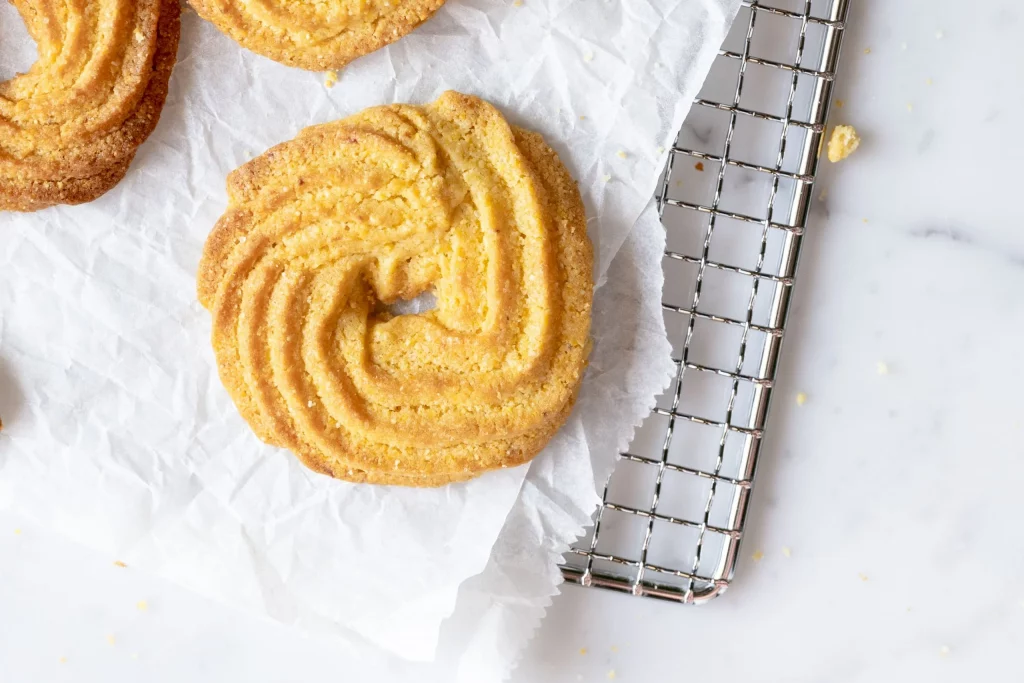
In Piedmontese, the language of the Piedmont region, meliga means cornmeal. These very well-known cookies, made of cornmeal, eggs, and butter, come from the area of Cuneo and Mondovì. A legend says that they were created when the price of wheat dramatically increased, so the bakers started mixing wheat with corn flour which was less expensive. Thus, they are “poor” cookies whose simplicity is what makes them delicious. They are usually paired with a scrumptious freshly whipped zabaglione, a velvety custard cream.
They can be eaten for breakfast or at the end of a special dinner with a glass of good Barolo wine. In fact, dip them in a sweet red wine, and it becomes a real treat!
What do cornmeal cookies taste like?
Not only are they scented and sweet, but they are also crumbly and crunchy. When you eat them, you actually feel their particular texture combined with the rich flavorful taste of butter and corn.
Where can I find the ingredients?
All the ingredients are easily available in any supermarkets: organic top-quality butter, all-purpose flour, granulated sugar, and extra fresh eggs. It’s the cornmeal that makes the difference. In the US, if you can’t find it in your local grocery store, you can get it online at Bob’s Red Mill, a popular grain purveyor.
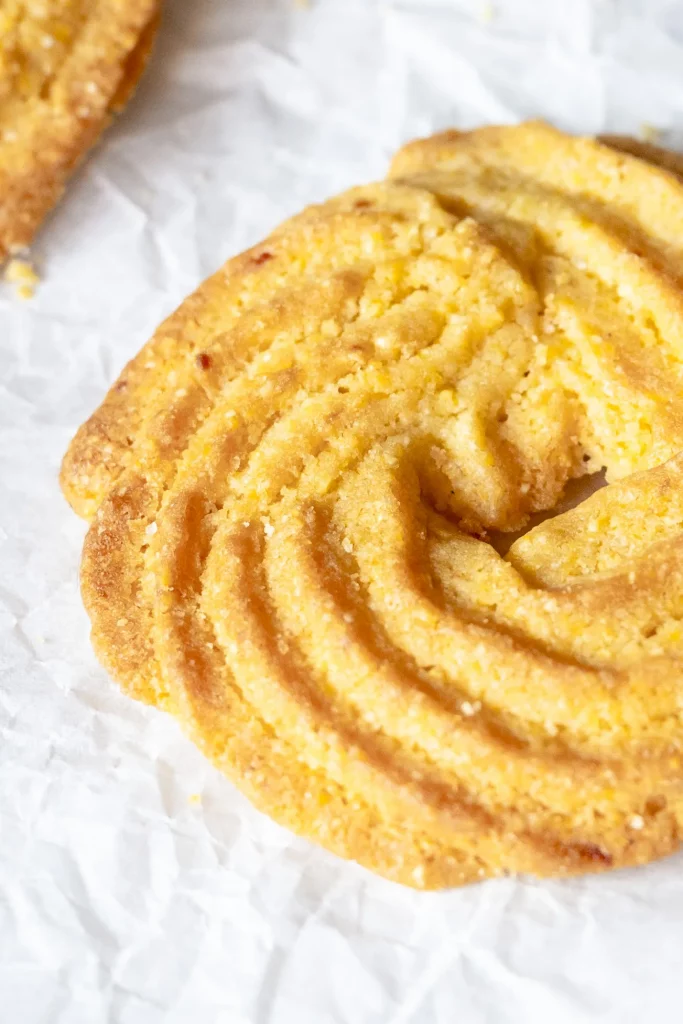
What is the difference between cornmeal and corn flour?
While they are both made from milled, dried corn, they differ greatly in texture. Cornmeal feels gritty and looks grainy. Corn flour is finely ground and looks smooth.
- Coarse-ground flour is called whole grain, or coarse semolina, where the grains are easily distinguished by touch. This is what is most commonly used to make polenta (savory cornmeal porridge). Its color, white or yellow, depends on the type of corn it comes from.
- Medium-ground flour, which is finer than the previous one, is called fioretto di mais in Italian. Its smoother texture makes it ideal as a side dish. You can’t distinguish the grains.
- Fine-ground corn flour is similar in its touch to wheat flour. Not easy to find in Italy, called fumetto di mais in Italian, it is commonly used to make pasta, cakes, cookies, and other typical local products.
- Instant cornmeal flour is really widespread because it is faster to cook. People use this to make instant polenta.
Using cornmeal flour to make these is a delicate balance
Cornmeal and corn flour, sugar, butter, and eggs are combined to make these delicious treats. Cornmeal flour does not contain gluten. It has to be combined with the suitable quantity of flour to make a compact, even batter. The soft and fluffy batter is shaped into small rings or rectangular cookies with a piping bag.
Delicious Cornmeal Cookies
Ingredients
- ½ cup + 2 tbsp of medium cornmeal or finely ground corn flour (70g)
- ½ cup + 2 tbsp of coarse ground cornmeal (or coarse semolina) (70g)
- 1 cup of all-purpose flour (120-140g)
- 1/3 cup of sugar (70g)
- 1 egg
- ½ cup + 1 tbsp of butter
- Finely grated lemon zest from a half lemon
- A pinch of salt
- 1 tsp of vanilla extract (4g)
Instructions
- Melt the butter over medium-low heat, pour it into a mixing bowl, and add the egg and sugar. Mix until well combined. You may also mix it in a stand mixer (KitchenAid) at low speed;
- Then add the 3 types of flour and process well;
- Add the lemon zest, vanilla extract, and salt. Mix until it’s a thick, wet consistency (just not liquid). This is a very important part of the process. If the mixture has too much liquid, the cookies will lose their shape. If it is too thick, it can’t be put into a piping bag and will be too crumbly;
- Put the dough into a piping bag with a Wilton 1M (15mm) star-shaped piping tip.
- Pipe rings about 2-inches in diameter (5-6cm) onto a baking tray lined with parchment paper. Allow enough space as they will expand.
- Bake in a static oven at 350°F (180°C) for 15 – 20 minutes until light golden.
How you can store cornmeal cookies?
You can store these mouthwatering cornmeal cookies in a cookie tin or an airtight glass container for up to 5 days. After, they will lose their texture, so crumble them and use them as the base for a cheesecake or a topping for a fruit compote.
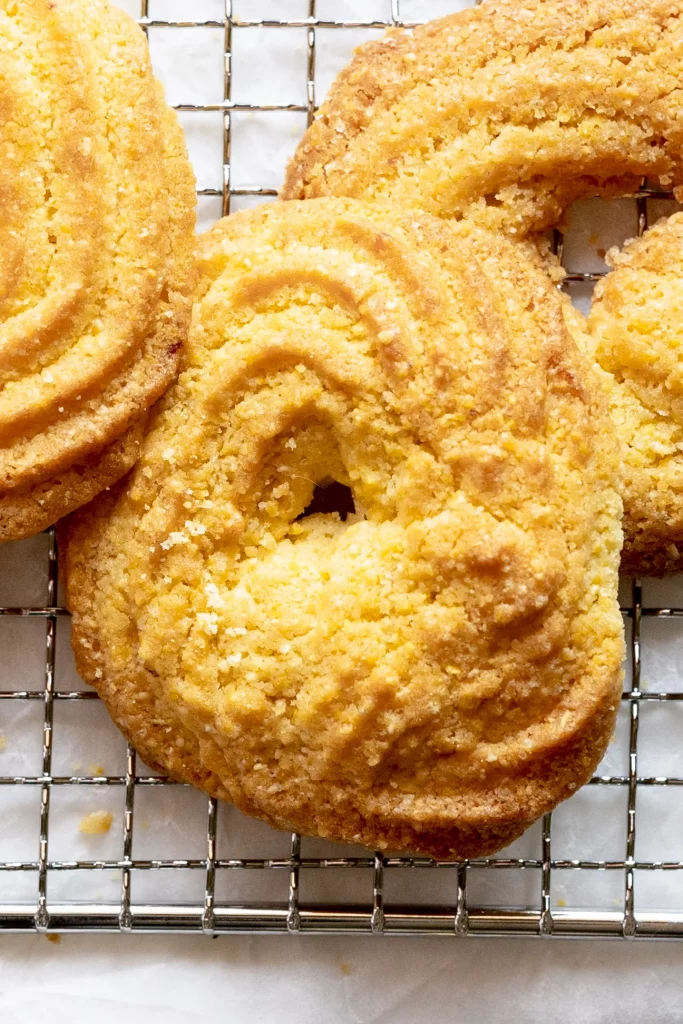
Additions to your cornmeal cookies
Do you want extra delicious cornmeal cookies? Dip them in melted dark chocolate, a perfect match between a grainy texture and a bittersweet flavor. Enjoy your corneal cookies with some good hot tea or coffee for an afternoon break with friends.

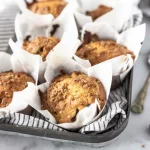
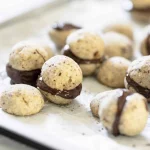
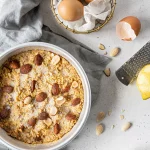
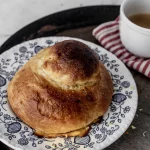
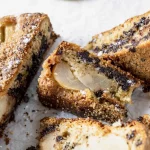
So if your batter is too thick, how should you thin it? Add more butter?